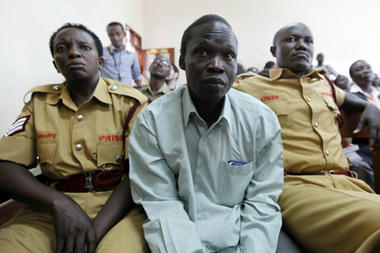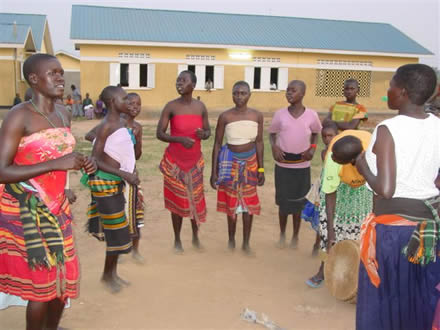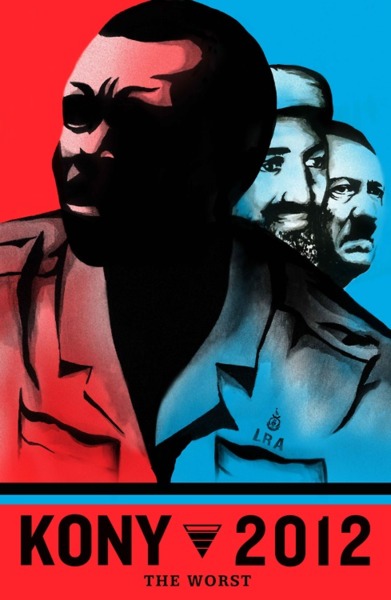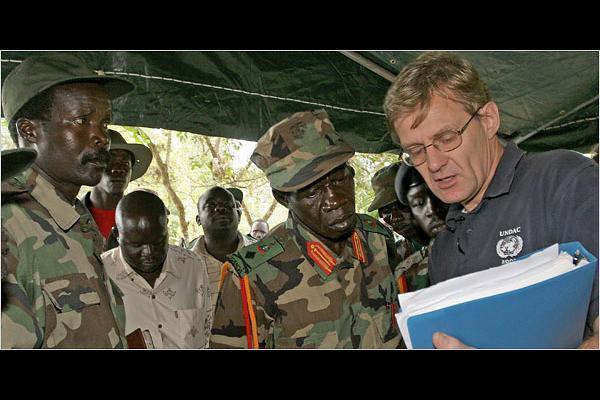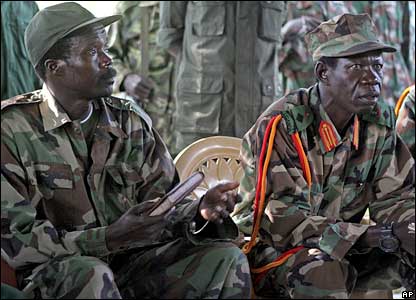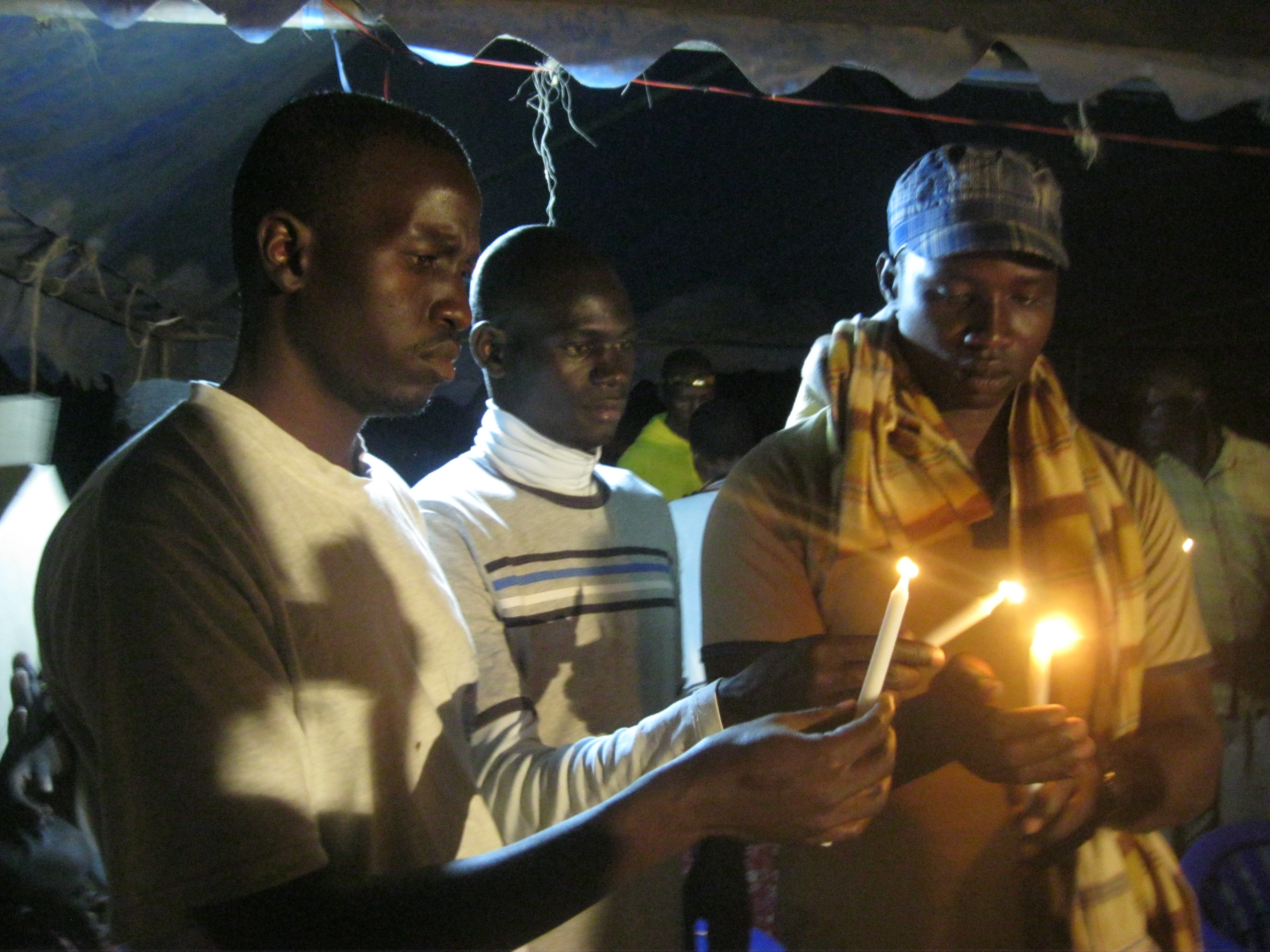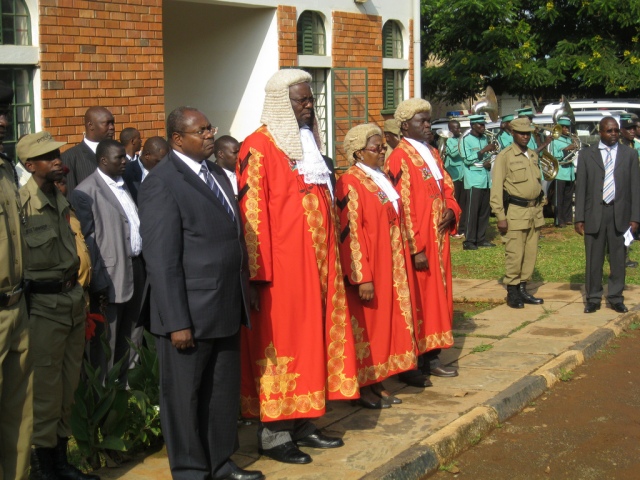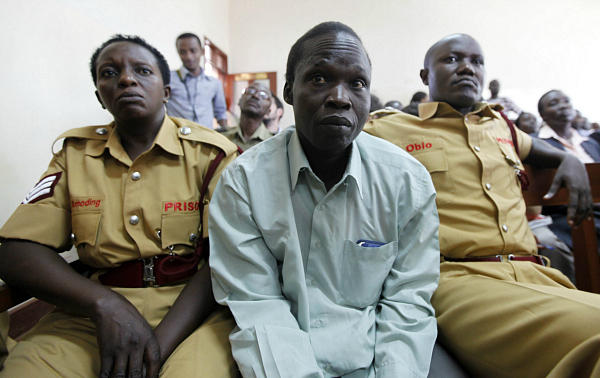“More on Kony 2012,” The Daily What, 12 March 2012
http://thedailywh.at/2012/03/12/more-on-kony-2012/
JRP is referenced twice in this opinion piece on “Kony 2012” — “… in an effort to perpetuate “myths” about Kony…” and “…are desperately trying — peacefully, through reconciliation – to move away…”
Author Unknown
More On Kony 2012: If this past week has taught us anything, it’s that people love — love — being aware of things. More than that, they love telling other people that they are aware of things. Most of all, however, people are absolutely, unconditionally, head over heels in lifelong love with other people liking the fact that they are aware of things.
But why do people love being aware of things as much as they do? In a 2008 blog post, Stuff White People Like attempted to get to the core of the Western world’s codependent relationship with awareness. By raising awareness, wrote Christian Lander, ”you get all the benefits of helping (self satisfaction, telling other people), but no need for difficult decisions or the ensuing criticism (how do you criticize awareness?).”
Of course, what makes awareness so alluring is precisely what makes it so pointless: It doesn’t — in and of itself — actually accomplish anything.
Awareness, beyond argument, is the first step towards fixing a problem. But, invariably, that shared endorphin boost people experience when banding together to rally around awareness for a cause wears off, and all that’s left is a bunch of people with no answers looking around for someone — anyone — to take the next step.
And then someone does. And we pat them on the back for their willingness to put in the elbow grease and leg work necessary to actually get something done. And we happily sign their petitions or open our wallets to them: After all, it’s the least we can do to help this selfless do-gooder advance our cause beyond awareness. And we send them on their way, content in the thought that, if we couldn’t spare the time, at least we could spare a few dollars and a signature.
But what if that person, or that organization, we just bankrolled doesn’t understand the problem or what needs to be done about it? What if, instead of helping, their actions end up hurting not only the people they claim to want to help, but also the people who are actually helping? And, perhaps most importantly, what if the people supposedly being helped don’t want help? Should it still be foisted upon them against their will?
Take KONY 2012 for example.
A lot has been said over the last several days about Invisible Children‘s ultra-viral awareness campaign that targets infamous central African warlord Joseph Kony, and his 26-year-old rebel militia, the Lord’s Resistance Army.
IC’s finances have been called into question; their “emotional porn” approach toward awareness solicitation has been criticised as a “fund-raising stunt” which employs “blatant dishonesty” in an effort to perpetuate “myths” about Kony thereby achieving their stated goal of direct military intervention; the group’s leadership troika — seen above posing in 2008 with members of the then-child-soldier-recruiting Sudan People’s Liberation Army – has been referred to as self-promoting colonialists by the AP photographer who snapped the shot. But, through all the op-eds and the think pieces and the public polls, the only opinions worth heeding have remained largely invisible: Those of the people who are actually from there.
“[Invisible Children] are not known as a peace building organization and I do not think they have experience with peace building and conflict resolution methods,” wrote Anywar Ricky Richard, the director of the northern Ugandan organization Friends of Orphans, and a man who knows first-hand the horrors of the Lord’s Resistance Army, having been a former child soldier in its service. “I totally disagree with their approach of military action as a means to end this conflict.”
Ugandan-born activist TMS Ruge, co-founder of Project Diaspora, agrees wholeheartedly with Richard. Of KONY 2012 he says: “It is a slap in the face to so many of us who want to rise from the ashes of our tumultuous past and the noose of benevolent, paternalistic, aid-driven development memes.”
Indeed, in the rush to condescend to the central Africans who are “just not working hard enough” to get rid of Kony and his ilk and finally start improving their quality of life, what many overlook (or willfully ignore) is the already-visible progress that has been made thanks to the hard-earned grassroots efforts of central Africans themselves.
“Uganda was voted by Lonely Planet amongst the top destinations for 2012 but has this NGO just undone the potential for Uganda’s tourism?” asks Ida Horner, a Ugandan expat who remembers well a much harsher life under Idi Amin. “After all the tourism industry provides a real opportunity for Ugandans to work their way out of poverty through providing services that tourists want to consume.”
Nigerian-American novelist Teju Cole takes it a step further and slams what he calls the “White Savior Industrial Complex,” which cares little for the end, so long as it gets satisfaction from the means. “The white savior supports brutal policies in the morning, founds charities in the afternoon, and receives awards in the evening,” says Cole. “The White Savior Industrial Complex is not about justice. It is about having a big emotional experience that validates privilege.”
And all this before we’ve even touched on the dark heart of the matter: Joseph Kony.
Kony is, without a doubt, a despicable human being. His 25-year reign of terror has resulted in hundreds of deaths, thousands of abductions, and hundreds of thousands of displacements. But to suggest that Kony is anywhere near worthy of cheap, throwaway comparisons to such historical horror-mongers as Hitler is not only irresponsible, it might actually be what Kony wants.
IC’s video appears to suggest that Kony is currently in possession of over 30,000 child soldiers. According to the UN’s latest report, the LRA has “less than 500 combatants,” and was “dislodged” by Ugandan security forces in 2002 — meaning they are no longer there, and are unlikely to return.
Kony and the LRA are now but a horrible memory to many in northern Uganda who don’t need an Internet campaign to make Kony popular. They know all-too-well who he is and what he was once capable of, and are desperately trying — peacefully, through reconciliation – to move away from the shadows of their traumatic past.
“Now we have peace, people are back in their homes,” says Dr. Beatrice Mpora, who runs a community health organization in the rebels’ former northern Uganda stomping ground of Gulu. “They are planting their fields, they are starting their businesses. That is what people should help us with.”
That is not to say that Kony is entirely done away with; he is still able to menace remote areas in neighboring countries such as the Democratic Republic of the Congo and the Central African Republic — his last known hideout. But rather than an ascending fuhrer, Kony is an aging monster, thrashing about blindly in hopes of remaining relevant for a little while longer.
Sadly, it seems IC’s KONY 2012 campaign may end up doing exactly what it aims to do: Provide a spent villain with a second wind of infamy.
“Most madmen love the idea of fame,” says Marc DuBois of Médecins Sans Frontières (Doctors Without Borders), “so Joseph Kony’s wet dream just came true.” By focusing all available attention on a bygone bogeyman whose days are numbered, the IC may be unwittingly rejuvenating the perception of Kony as an intimidating and influential force with a wider reach than his true resources allow.
“Making Kony ‘famous’ could make him stronger,” says well-respected Ugandan blogger Javie Ssozi. And that strength puts a lot of people in danger, including both locals and aid workers such as DuBois and colleague Avril Benoît. “MSF teams in LRA-affected regions of DR Congo, Central African Republic & South Sudan are likely wary of retaliation risks,” said Benoît.
IC, with its support for direct military intervention in Uganda, may not care that Uganda’s own government considers it “totally misleading to suggest that the war is still in Uganda,” but Kony does. To him, KONY 2012 represents a rebirth — a chance to restore a stifling grip that has been slipping for years.
So say KONY 2012 succeeds. America plants even more bootprints on the ground, smokes Kony out of his cave, and turns him over to the International Criminal Court. A job well done and stogies all around. Now there’s just the small matter of the fact that nothing has actually changed, because KONY 2012 doesn’t do a lick to address any of the big-picture problems currently facing central Africa.
All it has succeeded in doing is propping up Uganda’s war-crimes-perpetrating military and its brutal, corrupt, human-rights-abusing dictatorship, and strengthening the alliance of four-term-president Yoweri Museveni with his US counterpart at a time when a foothold in Uganda would be extremely advantageous to American oil interests.
Meanwhile, actual problems in need of actual solutions are being rendered inaudible by the beating of war drums.
Gulu, the Ugandan town ravaged by the LRA in a previous life is now home to the highest numbers of child prostitutes in Uganda, according to Ugandan journalist Angelo Izama. It also has unacceptably high rates of HIV/AIDS and hepatitis, even when compared to the rest of Africa. And the real bane of Ugandan children — the mysterious “Nodding Disease,” which has killed scores and debilitated hundreds — is no closer to a cure.
“Last year I went to Gulu, Uganda, where Invisible Children is based, and interviewed over 50 locals,” writes Columbia University student Amber Ha in an open letter to IC’s Jason Russell. “Every single person questioned Invisible Children’s legitimacy and intention.”
Adam Branch, a human rights advocate who has worked for years in northern Uganda, elaborates on what precisely has given so many people in the area pause:
The warmongering, the self-indulgence, the commercialization, the reductive and one-sided story they tell, their portrayal of Africans as helpless children in need of rescue by white Americans, and the fact that civilians in Uganda and central Africa may have to pay a steep price in their own lives so that a lot of young Americans can feel good about themselves, and a few can make good money.
By now it should be abundantly clear that KONY 2012 doesn’t offer a single enduring solution to any of the problems it pretends to want to fix. At the very least, it makes things worse. At the very most, it makes things much worse.
But beyond the reasons why lies a simple truth: Lasting change — the kind that makes people’s lives truly better — doesn’t come from awareness, or even from doing something: It comes from doing what needs to be done. And knowing what that is requires paying attention, listening to the victims, and understanding the whole story.
You’ll notice that I haven’t once mentioned money. There is plenty to say about IC’s accountability and transparency (or lack thereof) and the way it goes about spending the piles of cash it is making off KONY 2012 — and piles of cash are definitely being made considering the ubiquitous ”sold out” heraldic standards that popped up almost instantaneously next to the all-important “awareness swag” IC is hawking in conjunction with the video campaign — but that discussion is mostly moot.
IC is not a charity in the true sense of the word. It is a private interest group that allocates the overwhelming majority of its budget (nearly 70% in 2011) toward travel, compensation, administration, fundraising, making movies, and lobbying celebrities and congress [pdf] to support its central aim: Direct foreign military intervention in Africa.
Whether or not that is what IC should be spending its money on is a question best left to IC. The real question that you should be asking yourself is whether or not that is what you should be spending your money on.
It should be well-evident by now that KONY 2012 is a poorly thought-out and oversimplified campaign with shortsighted objectives that are detrimental to every relevant cause except making money. More than that, it is a campaign that is unwelcome by local civilians, politicians, experts, and humanitarian aid workers.
Asked about the video’s glossing over major aspects of regional history and culture, IC co-founder, and the star of KONY 2012, Jason Russell told the New York Times, “No one wants a boring documentary on Africa. Maybe we have to make it pop, and we have to make it cool. We view ourself as the Pixar of human rights stories.”
That’s great, except Africa is not a feel-good animated feature for the whole family. It is a real place with real people who would suffer real consequences if KONY 2012 succeeded in convincing well-meaning individuals that all it needs for a happy ending is to catch the “bad guy” with the help of American soldiers.
Africans deserve better than to be treated like two-dimensional Wacom sketches by a group of sensationalist jet-setters who — by their own admission — oversimplify the issues to sell their cause (and their bracelets). The people of Africa — nay, the people of everywhere — deserve real, long-lasting solutions; not quick-fix half-remedies that look good on Facebook.
There are plenty of ways to help without trampling all over self-determination. There are good, honest, transparent not-for-profits based in Africa that have been working for years to promote self-sufficiency through education, health services, rehabilitation, democracy-building initiatives, and myriad other programs that have resulted in empowering change. These organizations help the people help themselves without condescension or remote imperatives.
But don’t take my word for it: Do the research. Find a cause you support and make sure it is what it says it is, and, more importantly, that it helps the people it claims to help. Invisible Children and KONY 2012 do not meet that criterion, and for that reason, above all other reasons presented here and elsewhere, it should not be allowed to speak on their behalf.
